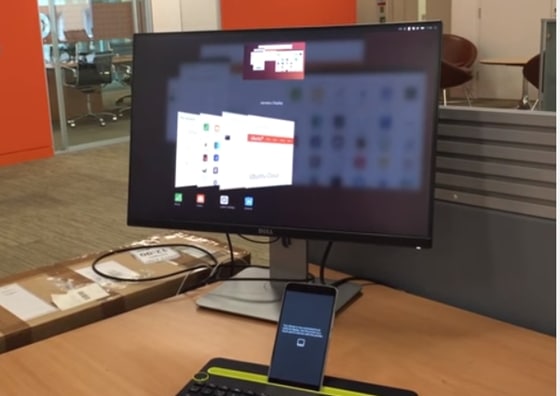How to Dual Boot El Capitan and Windows 10 on a single SSD
Note: First I wanted to say that this is the easiest method I found that works with my workflow. Some people may not own three flash drives or may not want to deal with GParted. If that is the case, this method isn’t for you, and you should keep looking for something that will work for you.
It should also be said that it would be a lot simpler in the long term to just use a separate physical drive for each operating system. If you ever want to do updates or restore a corrupted OS, two separate drives are always easier to work with. I was determined to go with a single drive because I have a SFF case and got an excellent deal on a 500GB Samsung 850 EVO.
Disclaimer: This method worked on my personal Z77 (Ivy Bridge) system. It is very likely that this will work exactly the same for Z87 and Z97 systems as well. I can’t make any guarantees for Z170 or X99. For full hardware specs are listed below:
- i7-3770K, GIGABYTE GA-Z77N-WIFI, 2x8GB 1600MHz Team Ram, 500GB Samsung 850 EVO, 2x3TB Seagate Barracudas (RAID 0), NVidia GTX 980, Silverstone 600W SFX PSU, NCase M1.
What you will need:
- Three flash drives: One needs to be 512MB or larger, Two need to be 8GB or larger
- ISO of Windows 10/8.1/7
- Copy of El Capitan downloaded from Mac App Store.
Prepping the Flash drives:
- You need to create a GParted Live USB, Windows Install USB, and Mac OS X Install USB.
- The link below has the download and instructions for creating a GParted Live USB. You only need a 512MB flash drive for this. Personally, I used the LinuxLive USB Creator method, but any method will work.http://gparted.org/liveusb.php
- Use Rufus to create a Windows installation flash drive. Stick with Rufus’s suggested setting for your particular Windows ISO: https://rufus.akeo.ie/
- Use the latest version of Unibeast and your copy of El Capitan downloaded from the Mac App Store to create a OS X installation USB. This is the first version of this install guide that has switch from the Chimera method to Clover:http://www.tonymacx86.com/el-capitan-desktop-guides/172672-unibeast-install-os-x-el-capitan-any-supported-intel-based-pc.html
Creating your partition table:
- For simplicity sake, at this point, you should disconnect all of your other drives from your motherboard or disable their SATA ports in your UEFI.
- Boot into GParted using your Live USB. There are plenty of demos online demonstrating how to use GParted. This guide is long enough, I don’t want to reinvent the wheel. Feel free to comment for clarification.
- After you select your keyboard mapping and language, GParted should take you into the GUI for the Partition Editor.
- Wipe out any existing partitions/partition tables from your dual boot drive.
- Create a new GUID partition table for the drive.
- Add two new partitions. Size them to however much space you want from each operate system and label them accordingly. Format the Windows partition as NTFS or FAT 32. It doesn’t matter, you will be reformatting it in a few minutes. The Mac partition must be formatted as HFS+. This cannot be reformatted in OS X, so you will need to get it right the first time. Make sure the the Windows partition is the first partition you create. This is the way I did it, it might work the other way around, but no guarantees.
- Once you’ve set up your new partitions on your drive, you can shut down and begin the Windows installation.
Installing Windows 10:
- Boot into your Windows install USB.
- Follow the on screen instructions until you get to the drive choice. At this point, you will notice that Windows will not install on your NTFS/FAT32 partition. No worries. Just delete that partition and create a new one out of the unallocated space.
- At this point, you should be taken through the standard Windows installation. Once you are finished, it is time to install OS X.
Installing El Capitan: – Plug in and boot from your Mac OS X install flashdrive created using Unibeast.
- At this point, you can more or less follow TonyMacx86’s instructions, with two caveats:
- If you are using a Nvidia 900 series GPU like I am, you will not be able to boot into the Mac OS X installer or the operating system without using the boot flag “nv_disable=1”. Once you install the Nvidia Web Drivers, this boot flag will no longer be necessary.
- When you boot into the Mac OS X installer, the first thing you should do is launch Disk Utility. Select your HFS+ partition, under File click “Enable Journaling”. Without this, OS X will refuse to install on your HSF+ partition.
- Follow the remainder of TonyMacx86’s guide over here: http://www.tonymacx86.com/el-capitan-desktop-guides/172672-unibeast-install-os-x-el-capitan-any-supported-intel-based-pc.html
- Make sure you complete all of his post installation steps and install the NVidia drivers if you need to.
…And that’s it! You should be all set! After I went through these steps, I had a single SSD booting both Windows 10 and El Capitan using the Clover bootloader.
How to Dual Boot OSX and Windows 10 UEFI on Separate Drives
El Capitan
Completed on an existing Mac OS X System – Real, Hackintosh, or VM
- For this, we can just use the Mac Multi-Tool bash file that I wrote. It will guide you through all the necessary steps.
- After the installer is created, boot into it and install your OS X.
- For best results, use a USB2.0 port directly on the motherboard.
- Use the flash drive (with clover installed) to boot the OS X hard drive.
- Install Clover onto the OS X hard drive, but instead of installing directly to the boot0af in MBR, select the options “Install for UEFI booting only” and “Install Clover in the ESP“. Also make sure the “RC Scripts” are installed.
- Mount the EFI partition of the OS X disk and copy your config.plist and kexts to the appropriate locations. They are the same as they were for the USB installer but located on this partition instead of in an “EFI” folder.
- You can use Mac Multi-Tool to mount your EFI partition.
- Ensure you have the appropriate boot flags and etc for your system and update your nVidia drivers if you are using a series 9 (or Maxwell arch) card.
- Now your OS X part is done.
Windows 10
Completed on an existing Windows System (I used Windows 7 Ultimate Pro 64bit)
The Clover installation requires an existing Mac OS X System.
At this point, you can use the one you created in the first section.
Windows Portion
We need to create a UEFI bootable Windows 10 flash drive with Clover installed. It’s quite a ride.
- Download Rufus if you don’t already have it.
- Create the installer on your 8+GB USB Flash Drive in Rufus using the following settings:
- Device – Your USB Drive
- Partition Scheme – GPT parition scheme for UEFI computer
- File System – FAT32
- Cluster Size – 4096 Bytes (or whatever is default)
- New Volume Label – Will be set by your Win10 iso file
- Check bad blocks – Unchecked
- Quick Format – Checked
- Create bootable disk using – ISO Image (Select your Win10 iso file)
- Create extended label and… – Checked
- Hit start and wait for it to complete
- Navigate to your USB drive and copy bootx64.efi from /efi/boot/ into /efi/microsoft/boot/
- Rename the copied file to “bootmgfw.efi” and rename “cdboot.efi” to “cdboot.bak“
- Directory structure of the flash drive should look like this:
+ Win10USB
|-+ efi
|-+ boot
|-- bootx64.efi
|-+ microsoft
|-+ boot
|-- bootmgfw.efi
|-- cdboot.bak
## Key ##
+ = Folder
- = File
- There will be other files/folders there, but those are the ones we are focusing on
Mac OS X Portion
- Run your clover installer on the Win10 USB drive and select these options:
- Install for UEFI booting only
- Install Clover in the ESP (should auto check after the first option is selected)
In the Drives64UEFI Section:
- EmuVariableUefi-64
- OsxAptioFix2Drv-64
- PartitionDxe-64
- I did not need to put a new config.plist or any kexts into the EFI partition of the USB
Installing Windows 10
- In BIOS, make sure you turn off the SATA controllers for all hard drives except for the one you intend to install Windows 10 on. Microsoft is still super picky about this and the install will fail otherwise.
- Get to your BIOS boot menu and select your USB drive’s UEFI boot option
- When it loads the clover screen, the last option (or one of them) should be something like “Boot Microsoft EFI boot menu from…” – This is the one you need
- If all goes well, it will load the installer, and you can install Windows 10 as normal
- When it’s done installing, let it reboot and do it’s whole “Hi” thing
- Install your drivers/updates etc, reboot, enable all drives in BIOS, and set your Mac OS X drive as your primary. In my boot order screen is was listed as “UEFI OS (P1 blah blah hd stuff)” You want the UEFI one for sure
- Now you’re ready to rock, I would make sure to install clover on another hard drive, or another USB drive in the unfortunate event of a failure of your main drive or corruption of your UEFI partition. Then you’ve got a way to boot into the OS still, just in case.
















+ There are no comments
Add yours